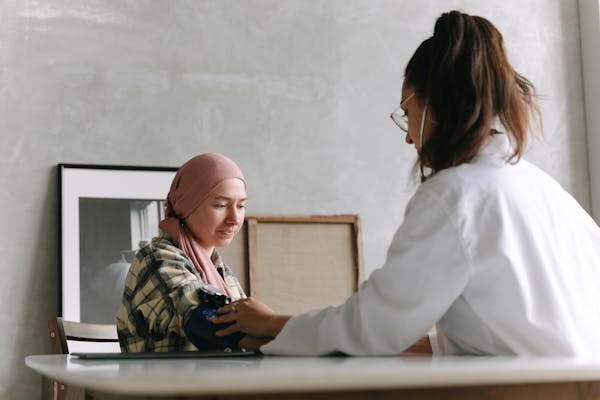Introduction
In the vast landscape of medicine, few specialties are as vital—or as complex—as haemato-oncology. It’s where hematology (the study of blood and its disorders) meets oncology (the study and treatment of cancer). Together, they address some of the most aggressive and life-altering illnesses known to medicine: blood cancers.
These include leukemia, lymphoma, multiple myeloma, and myelodysplastic syndromes (MDS)—diseases that often originate silently but can quickly affect a patient’s entire system. Through early detection, advanced treatments, and research-driven care, haemato-oncology is changing the way we approach these conditions.

What Does Haemato-Oncology Involve?
Haemato-oncology focuses on diagnosing and treating cancers that affect blood cells, bone marrow, and lymph nodes. These cancers don’t form solid tumors like breast or lung cancer, but instead impact the body's internal production systems.
Here are the main types:
Leukemia – Starts in bone marrow, affecting white blood cells.
Lymphoma – Cancer of the lymphatic system; can be Hodgkin or Non-Hodgkin.
Multiple Myeloma – Affects plasma cells that produce antibodies.
Myelodysplastic Syndromes (MDS) – Disorders caused by faulty or abnormal blood cell development in the bone marrow.
These conditions are often diagnosed with blood tests and bone marrow analysis, but their impact can be widespread and systemic.

What Causes Blood Cancer?
Although there’s no single cause, several factors are associated with a higher risk:
Genetic mutations or inherited disorders
Environmental exposure to harmful chemicals or radiation
Viral infections, like Epstein-Barr virus or HTLV-1
Weakened immune system, either due to illness or medication
Age, especially in people over 60
That said, some patients are diagnosed with no identifiable risk factors at all—underscoring the complexity of these diseases.

Recognizing the Symptoms
The symptoms of blood cancer can be subtle at first but tend to worsen over time. Here are some of the most common signs:
Persistent fatigue or weakness
Frequent fevers or infections
Unexplained weight loss
Bruising or bleeding easily
Bone pain or tenderness
Swollen lymph nodes
Night sweats
Because these symptoms are shared with many other conditions, they’re often misdiagnosed or overlooked. That’s why awareness matters.
How Are These Cancers Diagnosed?
Diagnosis usually begins with routine blood work. If something looks suspicious, your doctor may order:
Complete Blood Count (CBC)
Bone Marrow Biopsy
Imaging tests like CT scans, MRIs, or PET scans
Flow cytometry to study cell types
Genetic testing to detect chromosomal abnormalities
These tests help doctors classify the cancer, determine its aggressiveness, and tailor the best treatment plan.

Modern Treatment Options
Thanks to years of research and innovation, haemato-oncologists now have several treatment options:
1. Chemotherapy
This is still one of the most widely used treatments. It involves using strong drugs to kill rapidly dividing cells, including cancerous ones.
2. Radiation Therapy
Targeted radiation is often used in lymphoma or when cancer has spread to specific areas.
3. Stem Cell (Bone Marrow) Transplant
This can help patients regenerate healthy bone marrow after high-dose chemo. Transplants can come from the patient or a compatible donor.
4. Targeted Therapy
This treatment uses drugs to “target” the specific genes or proteins that cancer cells depend on.
5. Immunotherapy
A newer method that boosts the body’s own immune system to detect and destroy cancer cells.
6. CAR-T Cell Therapy
This breakthrough therapy genetically modifies a patient's T-cells to seek and destroy cancer—particularly promising in leukemia and lymphoma cases.

Life After Diagnosis: Living With Blood Cancer
A blood cancer diagnosis is overwhelming, not just physically but emotionally. Treatment often takes months, and side effects can be intense. However, advances in supportive care have improved quality of life during treatment.
Patients may need:
Nutritional guidance
Pain management
Mental health support
Physical therapy
Support groups for patients and families
It's a team effort—doctors, nurses, caregivers, and the patient all play essential roles in the healing journey.
What Does a Haemato-Oncologist Do?
Haemato-oncologists are specialists who diagnose and treat blood cancers. But their role goes beyond medical care:
They coordinate tests and diagnosis
Design personalized treatment plans
Monitor progress throughout treatment
Handle side effect management
Often participate in clinical trials and research
They typically work alongside other specialists such as radiologists, transplant coordinators, nurses, and counselors to offer holistic care.
New Frontiers in Haemato-Oncology
The field of haemato-oncology is constantly evolving. Some of the most exciting developments include:
Precision medicine, which tailors treatment to the genetic profile of the patient
Gene editing techniques like CRISPR that may offer permanent cures
Minimal residual disease (MRD) testing to catch relapse early
AI and machine learning tools helping doctors predict outcomes and treatment responses
These innovations are offering new hope, especially for patients with resistant or recurrent disease.
Final Thoughts
Blood cancers might not be as visible as solid tumors, but they are no less serious. Early diagnosis, informed treatment, and compassionate care are the cornerstones of haemato-oncology. With research breakthroughs and dedicated specialists leading the charge, patients today have more options—and more hope—than ever before.